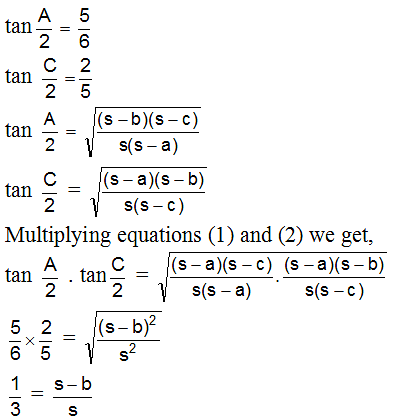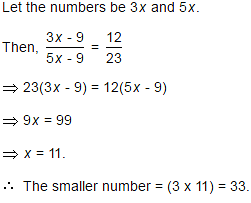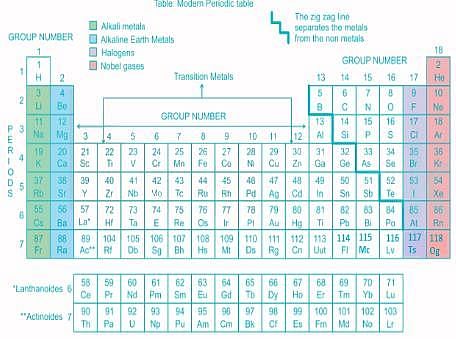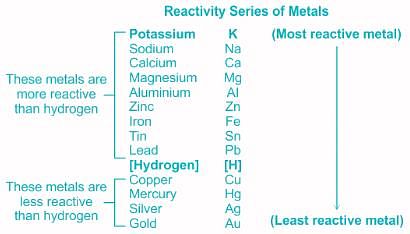UP TET Paper 2 Mock Test - 10 (Science and Mathematics) - UPTET MCQ
30 Questions MCQ Test - UP TET Paper 2 Mock Test - 10 (Science and Mathematics)
According to the theory of Bruner, which of the following statements is correct?
Which of the following is the major obstacle to ensure achievement of high academic standards from disadvantaged students?
| 1 Crore+ students have signed up on EduRev. Have you? Download the App |
Which of the following is not a technique to manage anxiety due to an approaching examination?
Which one of the following reasons is responsible for children to NOT learn critical thinking?
The ‘fear of failure‘ needs to be discouraged in children within a classroom because:
समाचार-पत्र की मुख्य पंक्तियों पर सरसरी दृष्टि डालना किस प्रकार का पठन है?
भाषा की प्रकृति के सम्बन्ध में कौन-सा कथन उचित नहीं है ?
अनौपचारिक बातचीत __________ अभिव्यक्ति का प्रकार है।
निर्देश: दिए गए पद्यांश को ध्यानपर्वक पढ़िए तथा पूछे गए प्रश्नों के उत्तर दीजिए।
मुक्त करो नारी को, मानव !
चिर बंदिनी नारी को,
युग-युग की निर्मम कारा से
जननी, सखी, प्यारी को !
छिन्न करो सब स्वर्ण-पाश ।
उसके कोमल तन-मन के,
वे आभूषण नहीं, दाम
उसके बंदी जीवन के !
उसे मानवी का गौरव दे
पूर्ण सत्व दो नूतन,
उसका मुख जग का प्रकाश हो,
उठे अंध अवगुंठन।
मुक्त करो जीवन–संगिनी को,
जननी देवी को आदृत
जगजीवन में मानव के संग
हो मानवी प्रतिष्ठित !
प्रेम–स्वर्ग हो धरा, मधुर
नारी महिमा से मंडित,
नारी-मुख की नव किरणों से
युग–प्रभात हो ज्योतित !
Q. कवि नारी को किससे मुक्त कराना चाहता है?
'Teachers should consider a child's prospective learning power before trying to expand the child's grasp of language. 'These are the views of
'She is too weak to walk.'
If you change the above sentence into a complex sentence correctly, then which of the following options will you get?
The term 'linguistic competence' is associated with which one of the following approaches/methods to ELT?
Directions: Choose the appropriate word group for the underlined words in the given sentence.
My grandfather is 90 but he is as fit as a fiddle.
Direction: Read the following information carefully and answer the given questions.
Initiatives such as “4 per mille” and Terraton aim to sequester huge amounts of carbon in the soil. The 2018 U.S. Farm Bill includes the first-ever incentives for farmers to adopt practices aimed at improving soil health and sequestering carbon. But these initiatives are missing a key point: not all soil carbon is the same.
The very different lifetimes of particulate organic matter and mineral-associated organic matter have important implications for these efforts. For example, adding low-quality crop residues to agricultural fields would likely create more particulate organic matter than mineral-associated organic matter. This could increase soil carbon in the short term - but if that field later is disturbed by tilling, a lot of it would decompose and the benefit would be quickly reversed. The best practices focus on building up the mineral-associated organic matter for longer-term carbon storage, while also producing high-quality particulate organic matter with lots of nitrogen to help boost crop productivity.
Natural healthy soils show us that providing continuous and diverse plant inputs that reach all the way to deep soil is key for achieving both high mineral-associated organic matter storage and particulate organic matter recycling. There are many promising ways to do this, such as maintaining plant cover on fields year-round; growing diverse crops that include high-nitrogen legumes and perennials with deep roots; and minimizing tillage.
However, not all soils can accumulate both mineral-associated organic matter and particulate organic matter. Before implementing any management practices for carbon sequestration, participants should first assess the carbon storage potential of the local soil, much as a doctor studies a patient before prescribing a cure. Sequestering soil carbon effectively requires an understanding of how particulate organic matter and mineral-associated organic matter work, how human actions affect them, and how to build up both types to meet our planet’s climate and food security needs.
Q. Select the option whose meaning is opposite to the word 'accumulate'.
Direction: Read the passage given below and answer the questions that follow by selecting the most appropriate options:
(1) We embarked along the sapphire route along National Highway 17 for a sun-soaked holiday. This route along Karnataka’s Karavali coast is India’s best beach and temple country. Flanked by the soaring Western Ghats on the east and the Arabian Sea on the west, the Karavali stretch is a scenic treat all the way.
(2) The first halt in our coastal circuit in Uttara Kannada district was Bhatkal. Bhatkal is where Konkani begins to share space with Tulu. A 4-km drive out of town took us to the beach and the small fishing wharf. At the bazaar, we tried out the two local specialities – date halwa and a salted roti. One also shouldn’t miss the Bhatkal biriyani.
(3) Gokarna is a charming little town with temples, a wide expanse of beach, two principal streets and clusters of traditional tile-roofed brick houses. You’ll also find quaint Udupi food joints, souvenir shops, and cyber cafes here.
(4) Once the ‘temple fatigue’ set in, we indulged in some sedate sea-watching. Om beach, one of Gokarna’s famed five, takes the shape of an ‘Om’, a spiritual symbol. The road twists through alleys, past people’s houses, temple chariots and ‘Way to Beach’ signs. The other pristine beaches, wedged between gigantic cliffs that protrude like delicate fingers into the sea, are Gokarna, Kudle, Half Moon and Paradise.
(5) The last halt in our coastal itinerary was Karwar. Karwar was the erstwhile trading outpost of foreigners. It is said that even the great explorer Vasco da Gama walked on the golden sands of Karwar. Apart from the excellent harbour, four beaches that offer sun, sand, surf and sport and five islands, Karwar has much more to offer.
(6) A short boat ride away you’ll find the excellent Devbagh Beach and five idyllic islands. With its pristine beach, and an eco-friendly resort with ethnic log huts, it is a romantic hideaway offering complete privacy and solitude sans the five-star trappings.
(7) We followed Tagore’s footsteps and took a boat cruise up the Kali from the mouth. We spotted dolphins as they gracefully dived into azure waters. From the island one can have a gorgeous view of the sea, sand and the neighbouring islands. As we returned from our coastal odyssey, we realised Karnataka is not short of fabulous beaches but lacks salesmen of its ravishing beauty.
Q. Which of the following words is the most similar in meaning to the word -
‘erstwhile’
A person sitting behind you in a cinema starts talking on the mobile phone and you want to tell him/her to stop.
Choose how you will make the request.
Language errors should be corrected when the goal is______.
Directions: Identify the antonym of the underlined word in the following sentence.
At school, the boy had erratic behaviour.
If in a  , tan
, tan  , tan
, tan  , then
, then
Which of the following statement is/are correct?
S1 - Average speed of an object over a finite interval of time is greater than or equal to the magnitude of average velocity.
S2 - Instantaneous speed at any instant is equal to the magnitude of instantaneous velocity.
Two numbers are in the ratio 3 : 5. If 9 is subtracted from each, the new numbers are in the ratio 12 : 23. The smaller number is
Find the remainder when 8317+5217+8417+5317 is divided by 68.
Arrange the following metals in the increasing order of their reactivity towards water :
I. Zinc
II. Iron
III. Magnesium
IV. Sodium
Let the focal length of an eye-piece be 2.5 cm. For a telescope of magnification 100, the focal length of the objective should be:
3 x 105 + 4 x 103 + 7 x 102 + 5 is equal to
Ammonia reacts with excess of chlorine to form an explosive compound 'X'. The compound 'X' is
For an effective discussion in class VII on the topic "Why smoke rises up?", a science teacher should
A. discourage questions during discussion
B. provide a common platform to the learners
C. acknowledge learners' responses to sustain their interest
D. summarise and assess the learners' ideas at the end of discussion
Which of the following(s) is/are the skill of micro-teaching in Mathematics?
i. skill of integrating knowledge and experience
ii. skill of facilitating child-centric learning
iii. skill of developing observation in learners
Which of the following questions would be an 'open-ended' question?
Directions: Answer the following question by selecting the most appropriate option.
A teacher asked the students to "find the number of possible pentominoes using 5 squares and then further explore the number of possible hexaminoes and so on". These types of activities help the child to
























